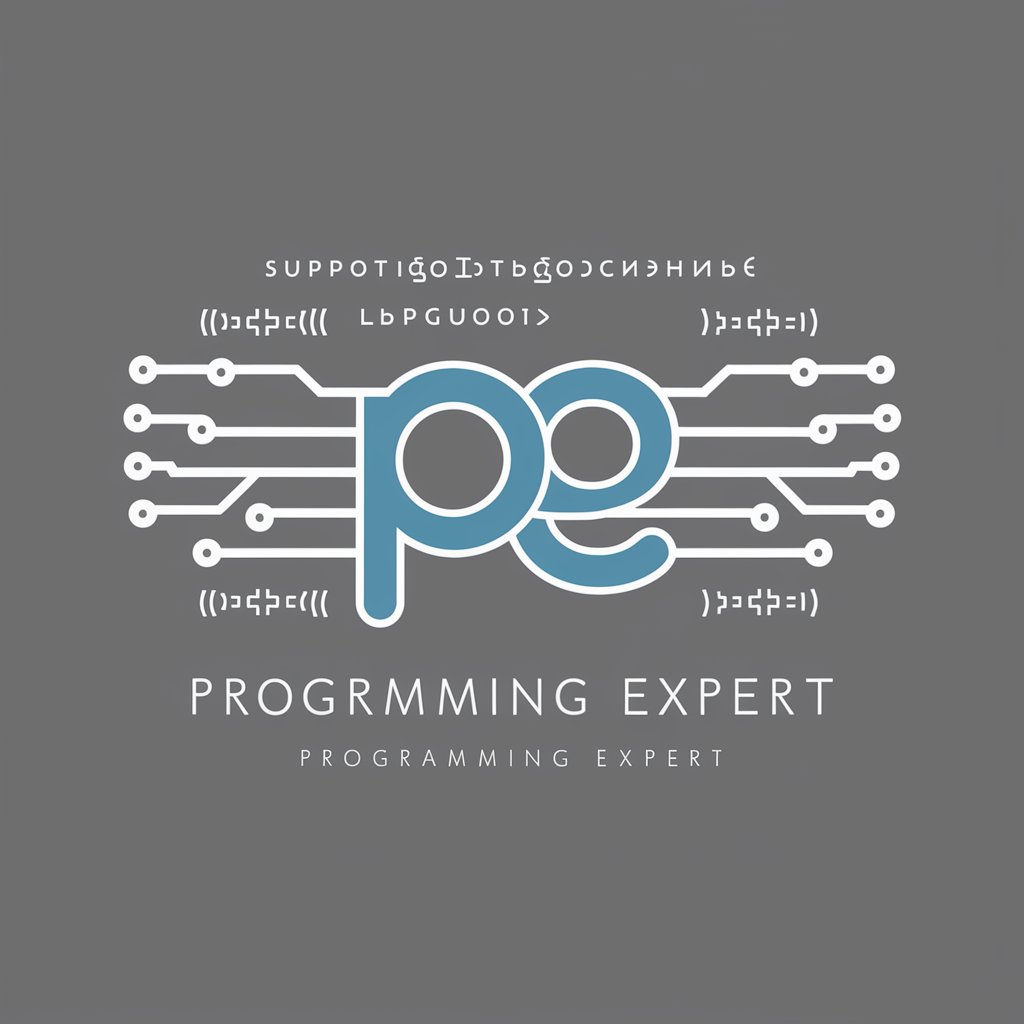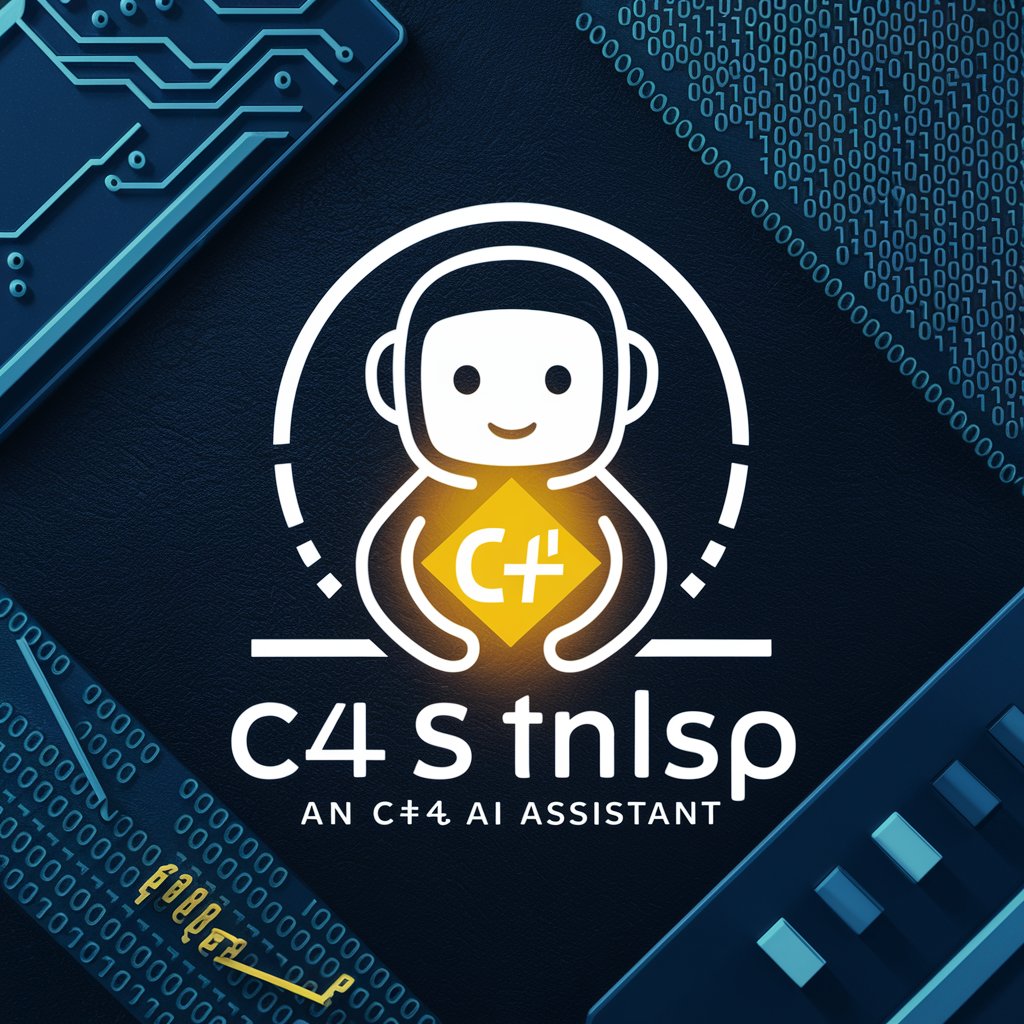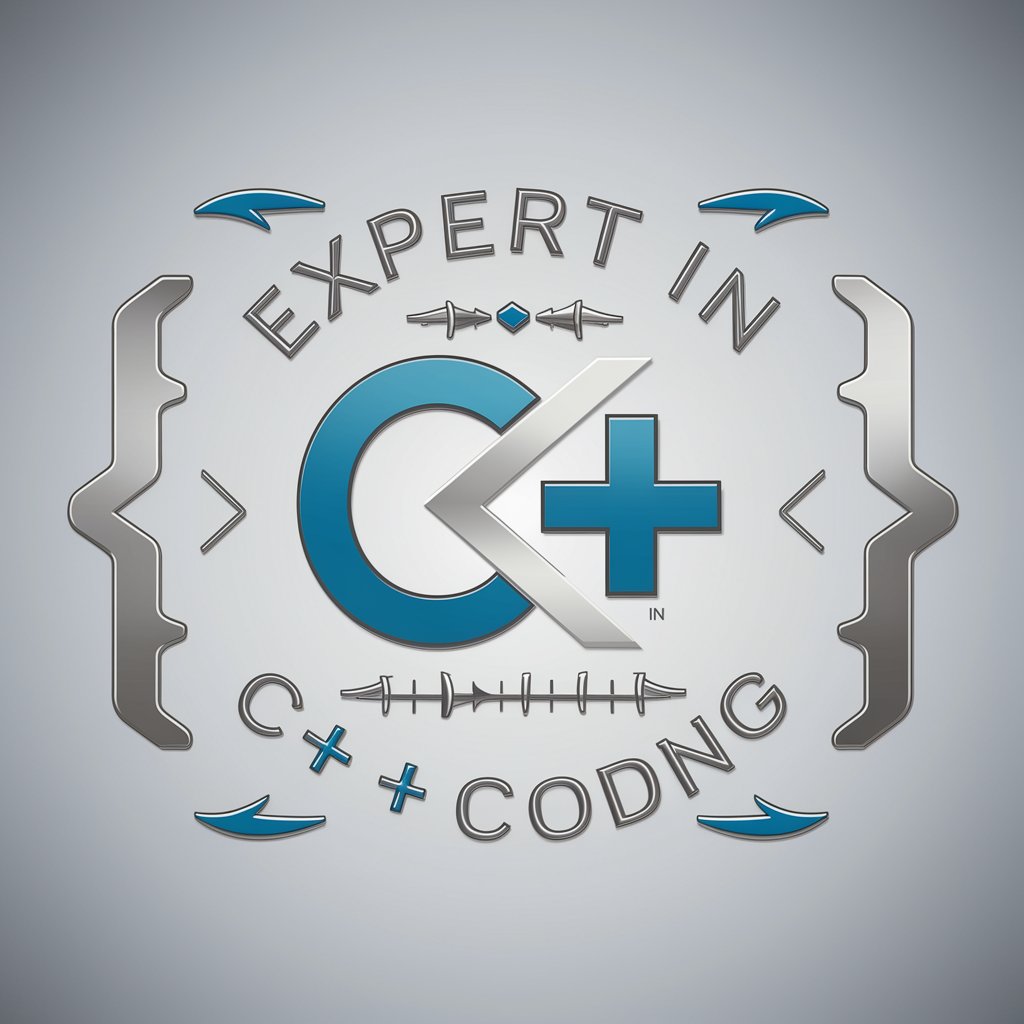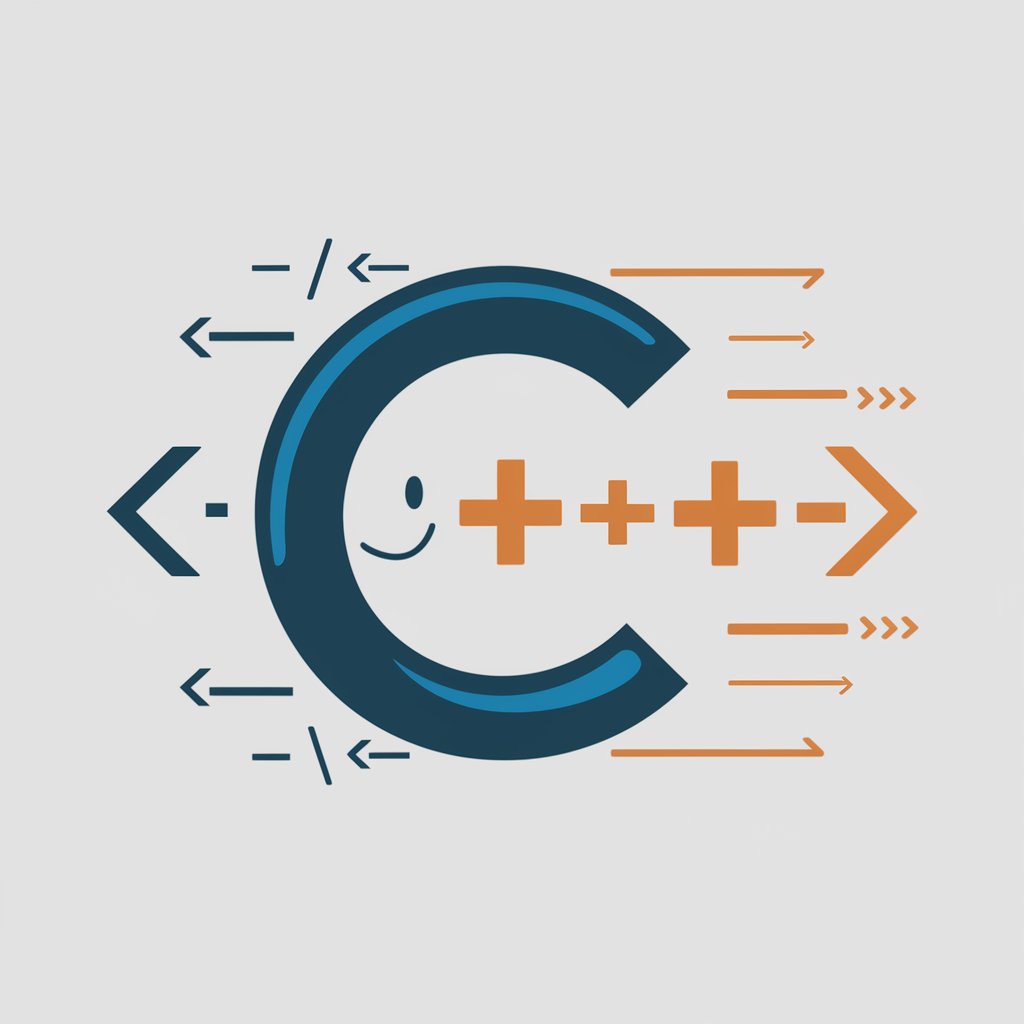
C++-AI-powered C++ code generation.
AI-enhanced C++ programming assistant.
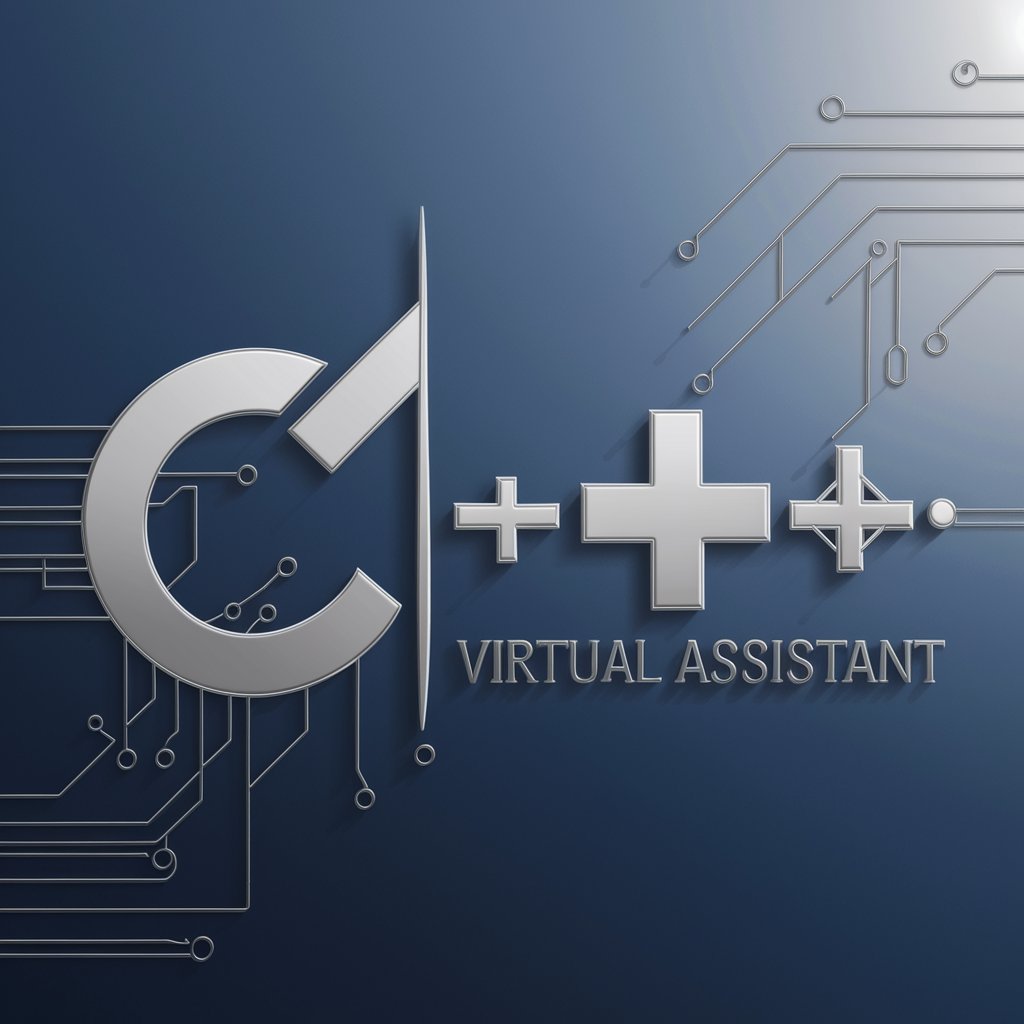
Friendly help with C/C++ coding, debugging, and learning in a professional way.
Help me write code in C++
Optimize my C++ code
Help me fix this C++ error
Explain how pointers work in C++
Get Embed Code
Introduction to C++
C++ is a powerful, high-performance programming language that was designed as an extension of the C language to include object-oriented features, making it a general-purpose language suited for system software, application software, and game development. C++ was created by Bjarne Stroustrup in the early 1980s to combine the low-level control of hardware that C offers with the higher-level abstractions needed for large-scale applications. It supports multiple programming paradigms, including procedural, object-oriented, and generic programming, allowing developers to select the most appropriate paradigm for their project. A key feature of C++ is its emphasis on performance and resource management. It allows for fine-grained control over system resources like memory and hardware, which is why it is often used in systems programming, real-time applications, and scenarios where performance is critical. For example, C++ is used extensively in game development, embedded systems, and operating systems.
Main Functions of C++
Memory Management
Example
The `new` and `delete` operators in C++
Scenario
In C++, memory management is manual, allowing developers to allocate and deallocate memory usingC++ introduction and functions the `new` and `delete` operators. This is crucial in high-performance applications where managing memory resources efficiently can make the difference between success and failure. For example, in a game engine, dynamic memory allocation might be used to load game assets such as textures and sound files at runtime, ensuring that the game uses only the required memory at any given time.
Object-Oriented Programming (OOP)
Example
Classes and inheritance in C++
Scenario
C++ supports object-oriented programming, where developers define classes that model real-world objects and relationships between them. For instance, in a simulation program, you might have a base class called `Vehicle`, and specialized classes like `Car` and `Truck` that inherit from `Vehicle`. This promotes code reuse and better organization, which is especially important in large-scale applications, like software for managing complex logistics or inventory systems.
Performance and Low-Level System Access
Example
Direct manipulation of hardware resources via pointers
Scenario
C++ allows direct access to hardware through pointers, enabling developers to write programs that interact directly with memory or peripheral devices. For example, in embedded systems development, C++ can be used to write firmware that communicates directly with microcontrollers to control hardware components, like sensors or actuators. This low-level control is what makes C++ the go-to language for systems programming, where every cycle of processor time matters.
Template Programming
Example
The Standard Template Library (STL)
Scenario
Templates allow for generic programming, enabling developers to write code that can work with any data type. The Standard Template Library (STL) provides a set of ready-to-use template classes and functions for common data structures (like vectors, lists, and queues) and algorithms (like sorting and searching). In a stock trading application, templates might be used to manage different types of financial instruments (e.g., stocks, bonds, options), without needing to write separate code for each one.
Concurrency and Multithreading
Example
Using `std::thread` for multithreading
Scenario
C++ provides powerful tools for multithreading and parallel programming, such as the `std::thread` library for spawning threads. This is particularly useful in applications like web servers or real-time data processing systems where multiple tasks need to be executed simultaneously. For example, in a video streaming application, one thread might handle user input and interface interactions, while another handles streaming video data, improving performance and responsiveness.
Ideal Users of C++
Systems and Embedded Developers
C++ is a preferred language for systems programming and embedded systems development due to its ability to offer low-level memory manipulation and direct hardware access. Ideal users are developers working on operating systems, device drivers, or real-time applications. These developers need precise control over hardware and memory management, making C++ indispensable for high-performance, resource-constrained environments. For example, embedded developers building firmware for automotive control systems or medical devices would benefit greatly from C++'s efficiency and low overhead.
Game Developers
Game developers use C++ extensively, particularly for performance-critical parts of their code, such as physics engines, rendering engines, and gameplay logic. C++'s efficiency, ability to handle complex data structures, and strong support for object-oriented programming make it ideal for developing high-performance game engines, like Unreal Engine. Since games often require real-time performance and interaction with hardware, C++ provides the low-level access necessary to optimize game performance. For example, developers creating console games or AAA titles would use C++ to ensure smooth performance and responsiveness.
Financial Software Developers
C++ is used in financial sectors where high-performance computations and real-time data processing are critical. Financial applications such as high-frequency trading platforms, risk management software, and algorithmic trading strategies often rely on C++ due to its speed and ability to manage memory and resources efficiently. The ability to handle vast amounts of real-time data with low latency is crucial in trading environments, and C++ provides the tools to optimize these systems for speed and reliability.
Software Engineers in High-Performance Computing (HPC)
Engineers working in scientific research, simulations, and simulations requiring high-performance computing rely on C++ for tasks that demand parallel processing, such as computational fluid dynamics (CFD) or climate modeling. C++ allows the optimization of code to run on multi-core processors or supercomputers, enabling simulations that involve massive datasets. For example, weather forecasting models or research simulations on protein folding would benefit from C++'s efficient handling of complex computations and memory management.
How to Use C++
Visit aichatonline.org for a free trial without logging in, no need forC++ usage guide ChatGPT Plus.
Start by visiting aichatonline.org. There, you can access a free trial of C++ programming tools without the need for registration or upgrading to a premium plan.
Set up a C++ development environment.
Download and install an IDE (Integrated Development Environment) such as Visual Studio, Code::Blocks, or CLion, or set up a text editor like VSCode with the appropriate C++ extensions. Additionally, ensure that you have the necessary C++ compiler, such as GCC or Clang, installed on your machine.
Write a basic C++ program.
Begin by writing a simple 'Hello, World!' program to ensure your setup is correct. Here's an example code: `#include <iostream> int main() { std::cout << 'Hello, World!'; return 0; }`. This will help you confirm that your environment is configured properly.
Compile and run your C++ program.
Use the IDE's built-in tools or run terminal commands like `g++ filename.cpp -o program` to compile your code and `./program`How to use C++ to execute it. Make sure to check for any errors during the compilation process and resolve them before running the program.
Experiment and practice with more complex programs.
Once you are comfortable with basic syntax and structure, start building more complex programs that utilize classes, functions, and data structures. Explore libraries such as STL (Standard Template Library) to learn about containers, algorithms, and iterators, which can significantly streamline your code.
Try other advanced and practical GPTs
TALE-C
AI-powered content tailored to your needs.

AI 노무사
AI-powered Korean labor-law guidance and templates

Urology Expert
AI-powered Urology Insights at Your Fingertips

ABAP Helper
AI-powered assistance for ABAP developers

행정 업무 수호천사
AI-powered administrative task optimization.

Sửa và Dịch Phụ Đề
AI-driven subtitle editing and translation tool.

Spring Boot Dev
AI-powered tools for rapid Spring Boot development
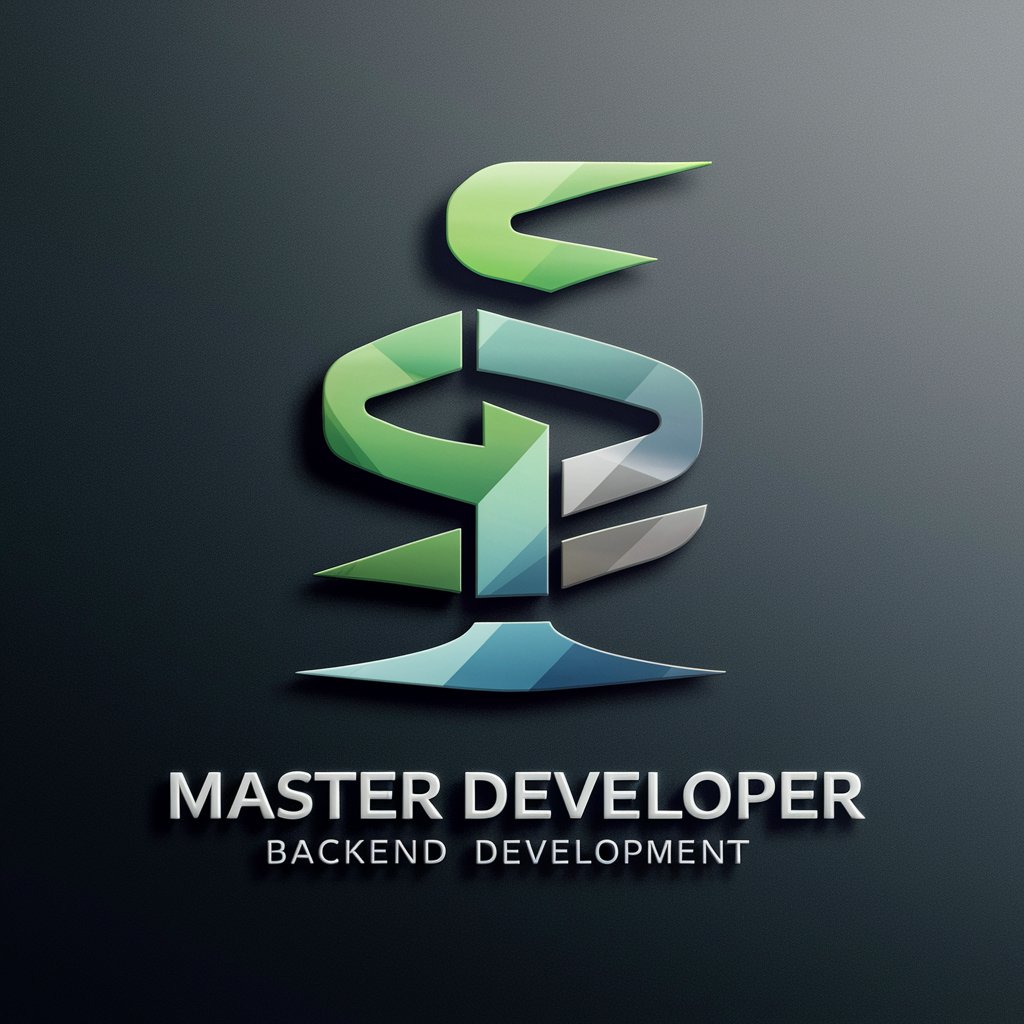
이미지 인식 Image Recognition
AI-powered image understanding for instant visual insights

Abogado del Ecuador.
AI-powered legal insights for Ecuadorians.

✒️만능 프로 작가
AI-driven writing for every need.

中英文翻译
AI-powered translation for seamless communication.
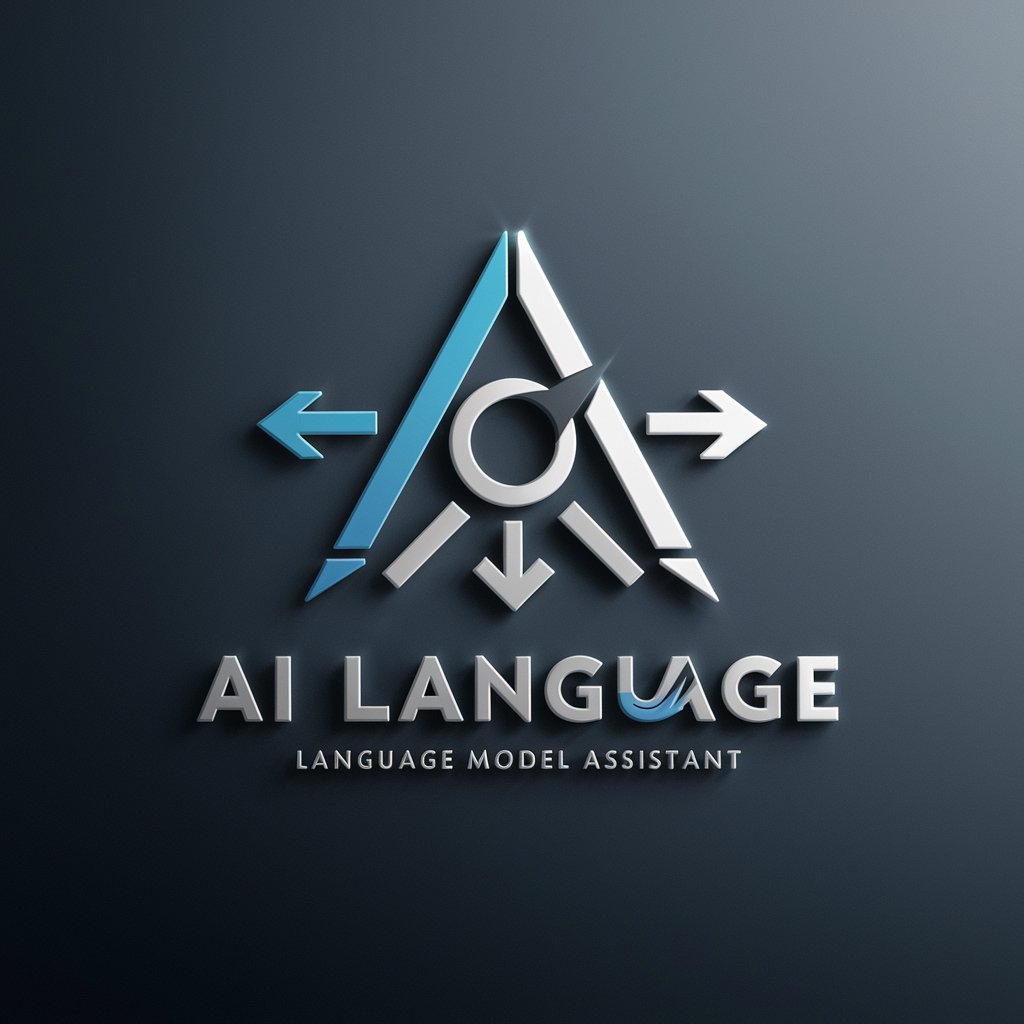
PDF 요약 전문가
AI-powered PDF summarization in seconds.

- Game Development
- Embedded Systems
- System Programming
- High-Performance Computing
- Software Engineering
Common C++ Questions & Answers
What are the basic data types in C++?
In C++, the primary data types include integers (`int`), floating-point numbers (`float`, `double`), characters (`char`), and boolean values (`bool`). These types serve as the foundation for declaring variables and performing arithmetic or logical operations.
How do I handle memory management in C++?
Memory management in C++ is manual. You use `new` to allocate memory and `delete` to free it. For dynamic memory management, the `std::vector` or `std::unique_ptr` classes are safer alternatives to raw pointers, as they automatically handle memory cleanup.
What are the differences between C++ and other languages like Python?
C++ is a statically typed, compiled language that offers fine-grained control over system resources and performance. Python, in contrast, is dynamically typed and interpreted, focusing on ease of use and quick development rather than low-level system control. C++ is better for performance-critical applications, while Python excels in rapid prototyping and readability.
What is the Standard Template Library (STL)?
The STL is a collection of template classes and functions in C++ that provide commonly used data structures (like vectors, lists, and maps) and algorithms (such as sorting and searching). It helps write efficient, reusable code without having to reinvent basic data structures and algorithms.
What is Object-Oriented Programming (OOP) in C++?
OOP in C++ allows for organizing code into objects, which bundle data and methods. Key principles of OOP include encapsulation (hiding data), inheritance (reusing code), and polymorphism (allowing different object types to be treated as one). C++ supports these principles through classes and objects, making it easier to manage complex programs.

